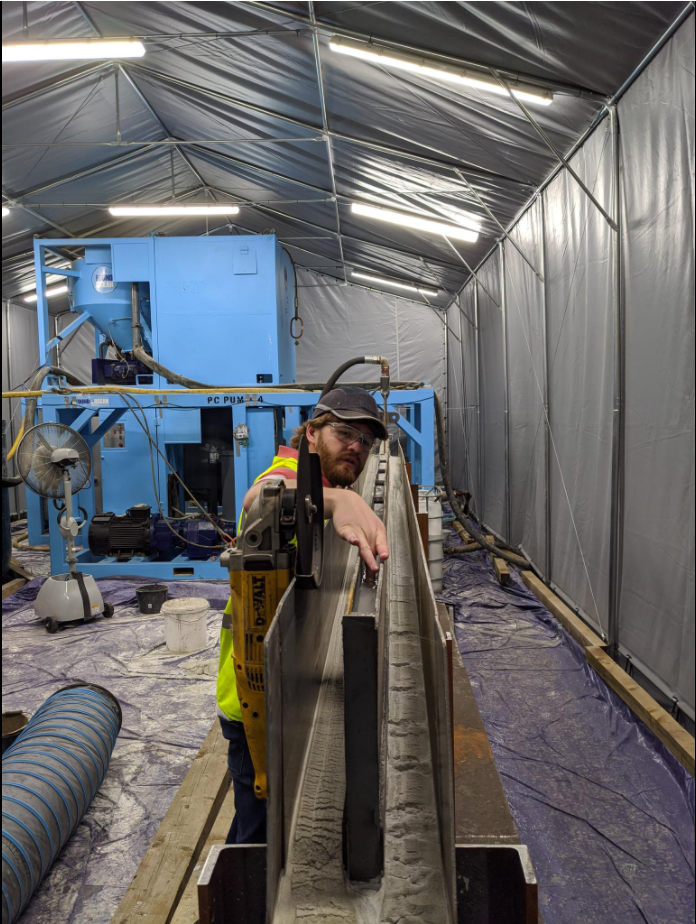
FoundOcean completes onshore trial to extend offshore grout material certification
“When the industry has a challenge they can’t fully resolve with computer modelling or through calculations, we want them to think of FoundOcean,” says CEO Jim Bell.
New grout materials, or existing ones being used in new environments or applications, must undergo real-world testing to demonstrate that they are fit for purpose.
A grout material manufacturer approached FoundOcean to conduct onshore trials to show that it would perform well in high temperature/humidity climates. This was an important phase for the material because it would expand the geographies in which it could be used.
Environmental challenges
Hot, humid conditions present two challenges: they are the worst combination for mixing and pumping grout and pose health and safety risks to the people and equipment.
Trial project manager Kerr Wright said, “The team had thorough medical checks before taking part in the trial and the grout spreads were reassessed for potential areas of concern.”
Onshore trial setup
The trial was live streamed to the licencing body and material manufacturer as travel restrictions were in place at the time.
FoundOcean constructed a closed environment habitat within one of its workshops in Livingston, Scotland. All mixing, pumping and testing equipment were stationed within to make the trial as realistic as possible. A 6m long by 1m high and 30mm wide formwork was constructed and situated inside the habitat.
The temperature was set to 45°C and humidity to 69%. These were controlled with specialist equipment from local suppliers. A watchman was stationed on the habitat entrance to observe the personnel within, ready to end the trial in case of an emergency.
Simulating the offshore environment
The grouting spread consisted of a mixer, two pumps, a water tank and grout silo. A 200m long hose was used to imitate the potential hose lengths needed offshore.
Kerr Wright said, “If you’re set up on a vessel, you may have to pump through 100m on deck and then 50m between the vessel and the platform or structure, then maybe another 50m on the deck of that platform. The distance soon adds up.”
The hose was then elevated to 25m to simulate pumping against gravity.
Demonstrating breakdown procedures
Before filling the formwork, FoundOcean performed a breakdown simulation. This showed how the material remained relatively fluid even when mixing and pumping was paused. After 30 minutes mixing and pumping resumed and the ‘held’ material was discharged. The grout hose was then connected to the formwork and filled.
All the standard offshore grouting tests were run to show that the material, mixing equipment and procedures could perform in the humid conditions. All tests, including grout cube samples, density and flow test measurements, were carried out inside the habitat for trial consistency.
This latest trial adds to FoundOcean’s long history of supporting innovation in the offshore energy industry.